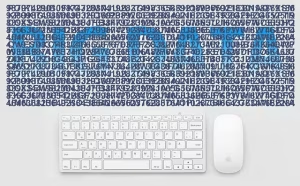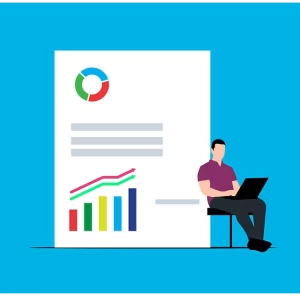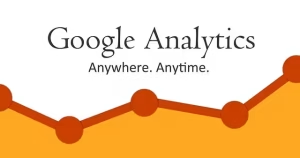In the modern business landscape of 2025, it’s a common scenario for a small business to be sitting on a mountain of information. You have sales figures from your point-of-sale system, website traffic data from your online presence, and customer feedback from social media. This accumulation of data is relentless. Yet, for many, this data remains an untapped resource, a silent partner in the business that is never asked for its opinion. The competitive edge is no longer awarded to those who simply possess data, but to those who can translate it into intelligent action.
This guide is constructed to serve as that translator. We will systematically demystify the complex world of data analytics tools, providing a strategic framework not just for choosing software, but for integrating a data-first mindset into your operations to achieve real-world goals, such as boosting your return on investment and securing a stronger position in your local market.
Foundational Concepts: What Are Data Analytics Tools and Why Do They Matter?

Before we can effectively use any tool, we must first understand its purpose. At its core, a data analytics tool is a piece of software designed to take raw information—like a long list of sales transactions or a spreadsheet of website visitor clicks—and turn it into something humans can understand and use to make smarter choices.
Defining the Toolbox
Imagine your business is a car and its performance data (speed, fuel efficiency, engine temperature) is constantly being generated. A data analytics tool is like the dashboard and the specialized diagnostic equipment in a mechanic’s garage all rolled into one. It gathers all that raw information and presents it in an organized way, such as a simple chart showing your monthly fuel usage. It can also help you look deeper to diagnose problems, like why your fuel efficiency dropped last month.
This process often involves something experts call ETL, which stands for Extract, Transform, and Load.
- Extract: This is the gathering part. The tool pulls data from all the different places it’s stored, like your sales software, your website, and your marketing platforms.
- Transform: The data is then cleaned up and organized. It might involve correcting typos, removing duplicate entries, and making sure everything is in the same format, like ensuring all dates are written as MM/DD/YYYY.
- Load: Finally, this newly cleaned and organized data is loaded into a system where it can be analyzed, often appearing in a dashboard or report that you can easily read.
For a small business, this means you can finally combine your sales data with your marketing data to see which campaigns are actually leading to purchases, a task that is nearly impossible to do manually.
The Strategic Imperative for Small Businesses
Understanding this process is important, but understanding why it’s a critical advantage is paramount. For a small business, where every dollar and every decision counts, leveraging data isn’t a luxury; it’s a strategic necessity for survival and growth.
- Optimize Your Marketing Spend: Every small business owner has asked the question, “Is my marketing working?” Data analytics tools provide the definitive answer. Instead of guessing, you can see exactly which social media post, email newsletter, or local ad brought visitors to your website and, more importantly, which ones led to a sale. This allows you to stop spending money on what doesn’t work and double down on what does, stretching your marketing budget further. For example, you might discover that your Facebook ads are getting a lot of clicks but your Google ads are getting all the sales. Without data, you might keep spending money on both. With data, you shift your budget to Google for a better Return on Investment (ROI).
- Improve Operational Efficiency: Data can reveal bottlenecks and inefficiencies you never knew you had. A local restaurant could use sales data to realize they sell very few desserts on Mondays and Tuesdays. They could use this insight to reduce food waste by prepping fewer dessert items on those days. A small service business, like a plumber, could analyze job completion times and travel data to create more efficient daily schedules for their technicians, fitting in more jobs per day and increasing revenue without adding staff.
- Identify New Revenue Streams: Your own data can point you toward new products or services your customers want. A small online bookstore might analyze purchase histories and discover that a large number of customers who buy science fiction books also buy books on astrophysics. This could signal an opportunity to create a new “Science Fact & Fiction” section, bundle books together, or run a targeted marketing campaign to that specific audience. This is an insight that would be invisible without the ability to analyze purchasing patterns.
- Personalize the Customer Experience: In a world of big, impersonal corporations, small businesses can win with a personal touch. Data helps you do this at scale. By understanding a customer’s past purchases, you can send them truly relevant offers. If a customer consistently buys a certain brand of dog food from your pet store every month, you can send them a reminder email with a 10% off coupon just before they’re about to run out. This not only makes the customer’s life easier but also builds incredible loyalty.
The Four Core Functions of Data Analytics

Data analysis isn’t a single activity; it’s a process with four distinct levels. Think of it like climbing a ladder. Each step you take gives you a more powerful and valuable view of your business. Understanding these four types will help you know what to ask of your data.
Descriptive Analytics: What Happened?
This is the first and most common step on the ladder. Descriptive analytics looks at past data and tells you what has already occurred. It summarizes the raw information into something simple and digestible. This is the “rear-view mirror” of your business.
- Focus: Summarizing past events and key performance indicators (KPIs).
- Business Application: A coffee shop owner uses descriptive analytics to generate a report showing that they sold 1,200 lattes last month, that their busiest day of the week was Saturday, and that their average sale amount was $7.50. This is all straightforward information pulled directly from their sales data.
- Common Tools: This is where tools like Microsoft Excel, Google Sheets, and the basic dashboards in Google Analytics shine. They are excellent at creating reports, charts, and tables that summarize what happened.
Diagnostic Analytics: Why Did It Happen?
Once you know what happened, the logical next question is why. This is the second step on the ladder. Diagnostic analytics is the investigative phase where you dig deeper into the data to find the root causes of the outcomes you saw in the descriptive phase.
- Focus: Identifying the causes, dependencies, and patterns behind the numbers.
- Business Application: The coffee shop owner sees in their descriptive report that sales were down 15% last Tuesday. They use diagnostic analytics to investigate. By cross-referencing their sales data with other information, they might discover there was a major traffic jam on their street due to construction, or that a competing coffee shop down the street ran a “Half-Price Tuesday” promotion. This context explains the “why” behind the drop in sales.
- Common Tools: More advanced tools like Tableau and Microsoft Power BI are great for this because they allow you to “drill down” into your data. You can click on a data point (like Tuesday’s sales) and filter your other data to see related factors, making it easier to connect the dots.
Predictive Analytics: What Is Likely to Happen?
The third step on the ladder moves from looking at the past to forecasting the future. Predictive analytics uses historical data, statistical algorithms, and machine learning techniques to identify the likelihood of future outcomes. This is where you begin to use your data to make educated guesses about what’s coming next.
- Focus: Forecasting future trends and behaviors.
- Business Application: The coffee shop owner uses two years of sales data to build a predictive model. The model analyzes past patterns and predicts that, based on the weather forecast and the upcoming holiday weekend, they are likely to sell 30% more cold brew coffee than usual next Saturday. This allows the owner to order more cold brew concentrate and schedule an extra barista to handle the expected rush.
- Common Tools: This level often requires more powerful tools. Programming languages like Python (using its powerful analysis libraries) and R are standards in this field. Some modern BI tools are also starting to include basic predictive modeling features that are easier for non-programmers to use.
Prescriptive Analytics: What Should We Do?
This is the top rung of the ladder and the most powerful form of analysis. Prescriptive analytics goes beyond just predicting what will happen and actually recommends a course of action to take to either capitalize on a future opportunity or mitigate a future risk. It is about providing specific, data-backed advice.
- Focus: Recommending specific actions to achieve a desired outcome.
- Business Application: The coffee shop’s prescriptive analytics tool doesn’t just predict the high demand for cold brew next Saturday; it also analyzes staffing costs and ingredient profit margins. It might recommend not just ordering more concentrate, but also running a special promotion bundling a pastry with every cold brew to maximize the overall profit from the expected surge in customers. It essentially provides the optimal “recipe” for success.
- Common Tools: This is the realm of highly advanced software and custom-built algorithms, often using complex machine learning. While largely used by big corporations, some accessible features are beginning to appear in platforms like Google Analytics, which can offer automated suggestions for improving your website.
A Curated List of Top Data Analytics Tools for Small Business Budgets and Needs

The market is flooded with hundreds of tools, making it difficult to know where to start. This list is curated specifically for the needs and realities of small businesses, balancing power, cost, and ease of use.
Business Intelligence (BI) and Data Visualization Platforms
These tools are designed to connect to multiple data sources and create interactive, easy-to-understand dashboards and reports.
- Microsoft Power BI: If your business already uses Microsoft products like Excel or Office 365, Power BI is a natural fit. Its desktop version is free to start, making it very accessible.
- Pros: Highly affordable, integrates seamlessly with Excel, user-friendly interface for beginners.
- Cons: The best features for sharing and collaboration are in the paid “Pro” version. Can be more powerful on Windows PCs than on Macs.
- Tableau (owned by Salesforce): Often considered the gold standard in data visualization. Tableau is incredibly powerful at creating beautiful, interactive charts and maps that make complex data easy to explore.
- Pros: Unmatched visualization capabilities, very active and helpful user community.
- Cons: Can be expensive, with pricing on a per-user, per-month basis. It has a steeper learning curve than Power BI.
- Looker Studio (formerly Google Data Studio): This is Google’s answer to data visualization, and it’s a fantastic starting point for any small business.
- Pros: It is completely free. It connects flawlessly with other Google products like Google Analytics, Google Sheets, and Google Ads. It’s web-based and very easy to use for creating basic dashboards.
- Cons: It’s not quite as powerful or fast as Tableau or Power BI when dealing with very large or complex datasets. It works best within the Google ecosystem.
Web Analytics Tools (Essential for Local SEO)
For any business with a website, these tools are not optional. They are the key to understanding your online customers and how they find you.
- Google Analytics 4 (GA4): This is the free, industry-standard tool for measuring website and app traffic. It tells you how many people visit your site, where they came from (e.g., Google search, Facebook, an email link), what pages they look at, and how long they stay.
- Pros: Free and incredibly powerful. Provides essential insights into your audience and marketing effectiveness.
- Cons: The new GA4 interface can be confusing for users accustomed to the older version. It takes time to learn and set up correctly.
- Google Search Console: Another free tool from Google, this one focuses specifically on your website’s performance in Google search results. It shows you which search terms (
keywords) people are using to find you, alerts you to technical problems with your site, and helps you understand how Google “sees” your pages.- Pros: Absolutely essential for any Search Engine Optimization (SEO) effort. Provides direct feedback from Google. Free.
- Cons: The data is specific to Google Search only, not other traffic sources.
Spreadsheet Software: The Ubiquitous Starting Point
Never underestimate the power of a good spreadsheet. For many small businesses, this is the first and sometimes only data analytics tool they need.
- Microsoft Excel: It’s more than just a grid for numbers. With features like PivotTables, you can quickly summarize huge tables of data. Power Query allows you to connect to and clean data from different sources, and its charting functions are powerful enough for most descriptive analysis.
- Pros: Most business professionals already know how to use it. It’s incredibly versatile.
- Cons: Can become slow and crash with very large datasets. Collaboration is not as seamless as with cloud-based tools.
- Google Sheets: This is Google’s free, cloud-based alternative to Excel. Its main advantage is collaboration—multiple people can work on the same sheet at the same time.
- Pros: Free, excellent for collaboration, automatically saves your work.
- Cons: Not as powerful as the latest desktop version of Excel for handling complex calculations or massive files.
Programming Languages for Advanced Customization
When your needs outgrow pre-packaged software, or you want to perform highly specific or predictive analysis, turning to a programming language is the next step. This usually requires a dedicated data analyst or a willingness to learn a new skill.
- Python: Over the last decade, Python has become the dominant programming language for data science and analytics. This is due to its simple syntax and its ecosystem of free, powerful libraries like Pandas (for data manipulation), Matplotlib (for creating charts), and Scikit-learn (for machine learning).
- R: This language was built by statisticians for statisticians. It is exceptionally good at complex statistical modeling and analysis. It has a massive community in academia and research that has created packages for almost any type of statistical task imaginable.
The Decision Matrix: How to Choose the Right Data Analytics Tool

Choosing a tool can feel overwhelming. Use this simple four-factor framework to make a logical, business-first decision.
Factor 1: Business Objectives and Key Questions (KQs)
Before you look at a single feature or price tag, ask yourself: What problem am I trying to solve? What question do I need to answer? Don’t start with the tool; start with the goal.
- If your question is, “Which of my website pages are the most popular?” your tool is Google Analytics.
- If your question is, “How can I combine my sales data, inventory data, and marketing data into one monthly report?” your tool might be Microsoft Power BI or Looker Studio.
- If your question is, “Which of my customers are most likely to stop buying from me in the next six months?” you may need a more advanced tool like Python.
Factor 2: Budgetary Constraints (Total Cost of Ownership)
Your budget is more than just the monthly subscription price. Consider the Total Cost of Ownership (TCO), which includes:
- Software Cost: The sticker price, either a one-time purchase or a monthly/annual fee per user.
- Implementation Cost: Do you need a consultant to help you set it up and connect it to your data sources?
- Training Cost: How much time (which is money) will you and your team need to spend learning how to use the tool effectively? An “expensive” tool that is easy to use might have a lower TCO than a “free” tool that requires 100 hours of training.
Factor 3: Data Sources and Integration
A tool is useless if it can’t access your data. Think of it like buying an appliance—you need to make sure the plug fits the outlets in your house. Make a list of where your data currently lives:
- Is it in QuickBooks?
- Is it in a custom database?
- Is it on a collection of Excel spreadsheets?
- Is it in Shopify or another e-commerce platform?
When evaluating a tool, check its list of “connectors” or “integrations” to ensure it can easily and automatically pull data from the systems you already use.
Factor 4: User Skill Level and Scalability
Be honest about who will be using the tool.
- If it’s you, the business owner, who is already short on time, you need a self-service analytics tool—something with a drag-and-drop interface like Looker Studio or Power BI.
- If you have an employee who is very good with Excel, they might be able to handle a more complex tool.
- If you plan to hire a data analyst, they will likely want the power and flexibility of a tool like Tableau or a programming language like Python.
Also, think about the future. Choose a tool that can grow with you. It’s better to start with a platform that has more advanced features you can grow into than to choose a simple tool you’ll outgrow in a year.
Conclusion: Activate Your Data, Accelerate Your Growth
The journey into data analytics can seem intimidating, but the principles are straightforward. It’s about asking better questions and using the right tools to find clear answers within the information you already possess. The right data analytics tool is not just a piece of software; it’s a strategic asset that turns raw numbers into a clear roadmap for your business. It allows you to move from intuition and guesswork to a state of data-driven decision making, where every choice is backed by evidence.
My final recommendation is to start small and build momentum. You do not need an expensive, complex system from day one. Begin by properly setting up the free tools at your disposal: Google Analytics and Google Search Console. Use Google Sheets or Excel to track your key business metrics. Create a simple dashboard in Looker Studio. Master these first steps. By doing so, you will begin to build a culture of data within your business. As your questions become more complex, your need for more advanced tools will become clear, and your investment in them will be justified by the value you’ve already proven.
Your data has a story to tell. Your first step is to perform a simple audit. Ask yourself: What is the single most important question about my business I need to answer right now? Start there. The tools and the insights will follow.










